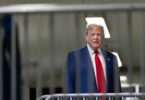William Pesek
The circular design of the People’s Bank of China headquarters in Beijing is an apt metaphor for the logic surrounding central banking in 2021.
Much of the drama involves the Federal Reserve. Namely, what peers around the globe can learn from Chairman Jerome Powell’s handiwork in Washington. Since February 2018, when then-President Donald Trump gave him the top Fed job, Powell supersized the balance sheet of the top monetary power.
And Powell’s team still has the liquidity spigot set on “overdrive.”
The PBoC is going the other way – taking steps to yank away the proverbial punchbowl. And in the process, perhaps offering the globe a better example than its Fed counterparts.
The divergence between Governor Yi Gang’s policies and Powell’s dramatize how priorities in central banking are indeed going full circle. In normal times, Yi’s team would be injecting sizable waves of liquidity into the banking system to prepare for a surge in demand ahead of the Lunar New Year that starts on February 11. On Wedne-sday, though, the PBoC actually drained funds.
The PBoC withdrew roughly US$12 billion from Asia’s most-watched financial system. The move came after a 37 basis-point drop in the overnight repo rate, a key barometer for the cost of short-term borrowing.
That repo-rate decline signaled that investors were pivoting even more sharply toward a “risk-on” crouch, a shift that runs counter to President Xi Jinping’s deleveraging efforts. Yi’s PBoC effectively retorted “not so fast.”
Granted, it’s been a chaotic 30 days in mainland money markets. Last month, the repo rate had surged to about 3.34%, rising above the yield on 10-year Chinese government bonds. That raised concerns about a liquidity squeeze in Asia’s biggest economy. A short-lived one, though. Short enough for Yi’s PBoC team to feel comfortable enough to tap the brakes a bit.
It’s a tricky balancing act. Last month’s move to withdrew capital shook markets as overnight interbank rates jumped to the highest in more than five years. Many investors – rightly, it turns out – read it as a dry run for coming PBoC efforts to tighten the monetary screws.
Any spike in money rates would make it far more expensive to speculate in bonds, stocks and real estate.
Liquidity mix
On Wednesday, the state-run Securities Times newspaper signaled the PBoC’s plans to maintain a “tightly balanced” liquidity mix to squeeze credit out of the system. “The central bank’s tightening moves are designed to cool financial speculation, particularly amid buoyant real estate transactions across major cities,” says analyst Lu Yang of Eurasia Group.
“In addition to the PBoC’s move,” Yang says, “several big cities reinforced the implementation of restrictive measures for real estate purchases this week to dampen speculative demand and pressure on housing prices. But on the whole, the PBoC will favor targeted tightening measures, including the use of curbs on new credit to specific sectors such as property developers.”
Adds economist Wang Tao at UBS Investment Bank: “With China’s growth expected to recover strongly in 2021, the PBoC is shifting policy focus more towards controlling risk and leverage, and we expect further monetary and credit policy normalization or tightening, not a sharp turnaround.”
In Wang’s view, “quantitative and prudential instruments, not rates, will drive the policy normalization. While the PBoC has moved to increase market-based price signals to help manage monetary policy over the years, quantitative and prudential instruments still matter more. The PBoC’s move to phase out banks’ benchmark lending rate for loan pricing with the loan prime rate did little to change the picture.”
China also is toying with “macroprudential” steps to curb excesses. “Financial discipline, not monetary policy tightening, will keep financial conditions tight,” PBoC adviser Ma Jun said recently. Yet, as Ma notes, “the leverage ratio has risen very fast, requiring monetary policy adjustments.” An additional surge in leverage “will naturally lead to future financial risks.”
This deleveraging ethos can be seen across Chinese agencies. Regulators in major metropolises Guangzhou, Hangzhou, Shanghai, Shenzhen and others are clamping down on speculation in real estate. As Deputy Housing Minister Ni Hong puts it: “Homes are for living in, not for speculation.”
All this contrasts sharply with the Fed’s continued policy of flooding markets with cash. In fact, the Fed under Powell’s leadership has often acted less independently than the PBoC under Yi’s direction – Yi also took the reins in 2018. Powell, it often seems, is giving in to market pressures, enabling punters. Yi is taking a different tack: leading market sentiment.
Unchartered territory
That, in many ways, was why Trump chose Powell, the first non-economist to run the US central bank in four decades. Even before Covid-19 arrived, Trump was browbeating the Fed to go down the same quantitative easing rabbit hole the Bank of Japan pioneered years ago.
The Fed had been dabbling in QE long before Trump and Powell came along. Following Wall Street’s 2008 crash, then-Fed Chairman Ben Bernanke slashed US rates to zero and beyond.
In 2018, though, Powell took Fed policy aggressively into uncharted territory. When Powell tried his hand at stepping back, normalizing rate policy, Trump called the Fed “crazy” and threatened to replace him. Trump even, presciently, expressed envy over Xi’s central bank.
Last May, Trump complained that Powell’s team doesn’t have his back as the trade war slammed US growth. “China will be pumping money into their system and probably reducing interest rates, as always, in order to make up for the business they are, and will be, losing,” Trump tweeted. “If the Federal Reserve ever did a ‘match,’ it would be game over, we win!”
More like lose, when one considers the dollar’s travail over the last year of Trump’s presidency that ended January 20. Part of the Chinese yuan’s 10% rise since late 2019 reflected Xi’s tolerance for a stronger exchange rate. Xi prioritized his vision for yuan internationalization over a short-term growth sugar high.
The dollar’s stumble reflected Trump’s financial vandalism. His frequent complaints about high exchange rates seemed more the stuff of Argentina than a Group of Seven power. Trump was larding up the national balance sheet with giant tax cuts and spending on pet projects long before Covid-19 arrived.
The national debt President Joe Biden inherits is already zooming toward $30 trillion – and giving Tokyo a run for worst-debt-burden-among-developing-economies status. America’s caseload of nearly 37 million coronavirus infections – a crisis Trump left at Biden’s doorstep – means stimulus will remain in overdrive.
That means Powell’s Fed, too. Washington insiders are tantalized by what to expect from the early interplay between Powell and new Treasury Secretary Janet Yellen, his predecessor. Yellen, of course, was the Fed chair who in late 2016 began to raise US borrowing costs away from zero.
12 years of QE
Watching Powell undo efforts to normalize Fed policy put Yellen in league with Toshihiko Fukui. In 2003 when Fukui became BOJ governor, he sought to return Tokyo’s monetary policy to normal.
Fukui worked steadily to wean Japan Inc off 12 years of QE, a monetary detox of the kind never tried before. By July 2006, he raised short-term rates by 25 basis points. Another hike in February 2007 put borrowing costs up to 0.5%.
The political and corporate establishments rebelled. By 2008, when Fukui’s replacement arrived, rates were slashed back to zero and Tokyo’s bond-buying drive was back, finding ever higher gears since then.
And now Powell’s team is faced with a point-of-no-return dilemma. Any move to hit the monetary brakes could devastate corporate America and its access to capital markets.
As such, central banks around the globe are keeping the monetary floodgates open. As economist Benn Steil at Council of Foreign Relations, which measures liquidity trends, puts it: “With all major central banks, save the PBoC, still engaged in quantitative easing,” CFR’s measure “holds steady.” Overall, Steil notes, “before the Covid-19 crisis, we had not seen this level of global easing since September 2012.”
The PBoC is taking a different path, one the Fed might want to study. Yi’s team seems to be reading its William McChesney Martin more carefully than Powell’s. The reference here is to the fabled Fed leader who observed that a central banker’s role is to “take away the punch bowl just as the party gets going.”
That could change, of course. The credit-and-debt excesses building up in China since the 2008 global crisis are a ticking timebomb if not deftly addressed. The $10-trillion shadow banking system needs serious policing. Default risks abound. China must devise a globally-trusted credit-rating system.
Even as Xi tolerates an increasing number of defaults by state-backed firms, the PBoC must pay close attention to tremors in mainland money markets. It’s comforting to hear Vice Premier Liu He stand by his pledge for “zero tolerance” approach to fraud and other violations in the bond market to protect investors.
China’s interbank bond market watchdog also is on the case, probing for irregularities and strains in debt markets.
Adult-in-the-room stance
Still, the PBoC’s adult-in-the-room stance so far in 2021 contrasts with Fed policies enabling bad behavior at every turn. One risk is that like their Japanese brethren, US chieftains grow hopelessly complacent amid ultra-loose credit conditions.
Another is how Fed largess is encouraging bad behavior far beyond the Wall Street trading pits.
A case in point is the US stock frenzy bubbling over into Reddit chat rooms, where retail activists are driving up the price of GameStop and other fringe stocks. It’s hard to quantify causes and effects here.
But it’s equally hard to believe that the gamut of hedge funds, retail investors and other punters could finance these massive leveraged trades if the Fed’s benchmark was, say, 3%.
Granted, as economist David Beckworth at George Mason University points out, it’s exceedingly hard for central banks to “surgically attack” bubbles without causing deeper pain. Look no further than the Fed in the 1920s or the BOJ in the late 1980s.
Yet these days, “a growing majority of investors don’t know anything about balance sheets, financials and could care less about management’s vision for their companies,” says economist Chris Rupkey of MUFG Union Bank.
“They like it because it’s cheap. It’s low in price and they’re going to buy it preferably with options.”
Powell really did seem to be missing the plot when he said last week that “the connection between low interest rates and asset values is probably something that’s not as tight as people think because a lot of different factors are driving asset prices at any given time.”
The “time” in which Powell is making big decisions is during a pandemic that’s squeezing US growth and hurting competitiveness. And yet Wall Street is going gangbusters, driving the Dow Jones Industrial Average to all-time highs.
It’s hard not to think Yi’s PBoC has a better grasp on reality when Powell is arguing that “if you raise interest rates and thereby tighten financial conditions and reduce economic activity in order to address asset bubbles and things like that, will that even help? Will it actually cause more damage? I think that’s unresolved.”
Powell might find the answers to these questions by circling back to decisions being made at PBoC headquarters in Beijing.






